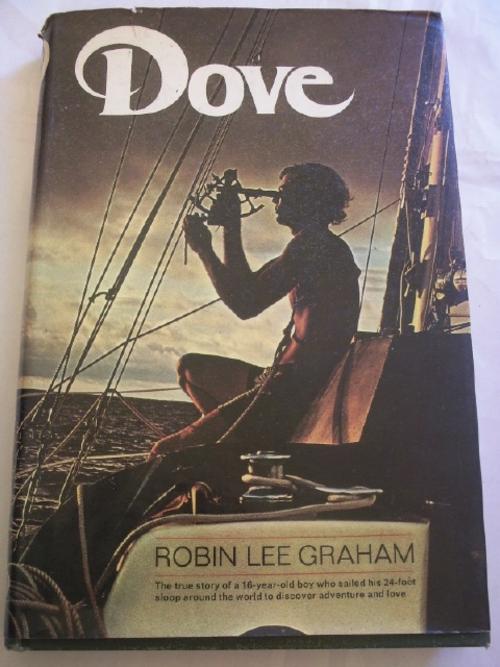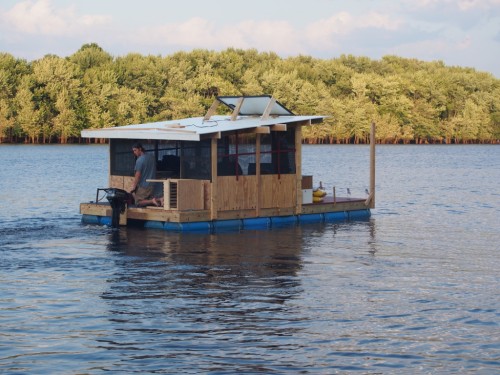I don’t know if it’s a universal trait or not, but people in the United States have long believed that “Bigger is Better.” “Size Matters.” I want to scream, “No it isn’t!” and “No it doesn’t!”
On the other side of the coin you have dumbest phrase of ALL TIME in “Less is More.” I can’t tell you how much this makes my back teeth ache. NO IT’S NOT!!! MORE is MORE! Less, by its very definition isn’t as much so it CAN’T be more! Now less can sometimes be BETTER than more but Less is NEVER more.
One of the most often asked boating questions is “What size boat do I need to go cruising?” Well, if you pay attention to the boating and cruising magazines whose life blood is the advertising income they receive from boat manufacturers and equipment manufacturers. Your life is in imminent danger the moment you leave the dock in anything less than 45 or fifty feet of fiberglass tricked out with every electronic device known to mankind. I remember once someone describing another person’s boat saying it was fantastic because it had the “most expensive” navigation gear available. Naysayer that I am I said that NO, most “expensive” is NOT a synonym for “best.” Those same boating mags totally ignore the fact that Robert Manry n 1965 sailed from Falmouth, Mass. to Falmouth, Cornwall, England in Tinkerbelle a tiny 13.5-foot (4.1 m) sailboat.
Or that 16 year old Robin Lee Graham sailed his 24′ Dove around the world alone
or that Tania Aebi did a solo circumnavigation in a 26′ sailboat when she was 18.
Between 1955 and 1959 John Guzzwell sailed solo around the world in a boat that wasn’t quite 21 feet long.
The answer to the question “What size boat do I need to go cruising?” was best summed up, I think by Don Casey and Lew Hackler in their book Sensible Cruising: The Thoreau Approach when they said, “The one you have.”
http://www.amazon.com/Sensible-Cruising-The-Thoreau-Approach/dp/0071580255
I absolutely LOVE this book and the advice in it is gold…
And “cruising” DOESN’T have to entail great ocean crossings. Taking your boat and going to a little cove you’ve never been to before is going cruising.
L. Francis Herreshoff, who knew a thing or three about boats had this to say about cruising . . . “Cruising should be entirely for pleasure, and when it ceases to be so it no longer makes sense. Of course those who want to beat out what little brains they have in a night thrash to windward should have a strong, stiff racing machine, a very expensive contraption, one which sacrifices the best qualities of a cruiser. But the little yacht that can snuggle alongside some river bank for the night and let its crew have their supper in peace while listening to the night calls of the whippoorwill will keep its crew much more contented. They will be particularly happy and contented when the evening rain patters on the deck and the coal-burning stove becomes the center of attraction. Then if you can lie back in a comfortable place to read, or spend the evening in pleasant contemplation of the next day’s run, well, then you can say “This is really cruising.”
And here’s a truism most people aren’t aware of: “Boats are used in inverse proportion to their size!” That is, the smaller the boat and the easier it is to use then the more it WILL BE USED.
So, what got me started on this rant in the first place? Well, I’ve once again been bitten by the “I need to have a shanty boat bug!” And I’ve been pouring over old articles I’ve saved and scouring the internet for new inspiration. And last night I saw this neat thing. It’s LaMar Alexander’s 8×12 Stealth-boat Tiny House Design.
The VERY FIRST THING that crossed my mind was, “with just three more sheets of plywood you could extend it to 8X20 feet and have a lot more room!” I mean that was my instant reaction, and it’s really not wrong, I don’t believe, if you’re making something that you intend to live on.
http://tinyhousetalk.com/lamar-alexanders-8×12-stealth-boat-tiny-house-design/#m2rqK975Cd4K6q2A.99
An eight by twelve foot shanty like this would be a great weekender or fine for a short vacation, but I really believe if you’re going to spend much time on it you need to make it AT LEAST 16-feet long but I wouldn’t go over 20 because of cost, weight, time to build, etc.
Just be wary of where you brain leads you. It’s going to automatically make you want to go bigger.

































